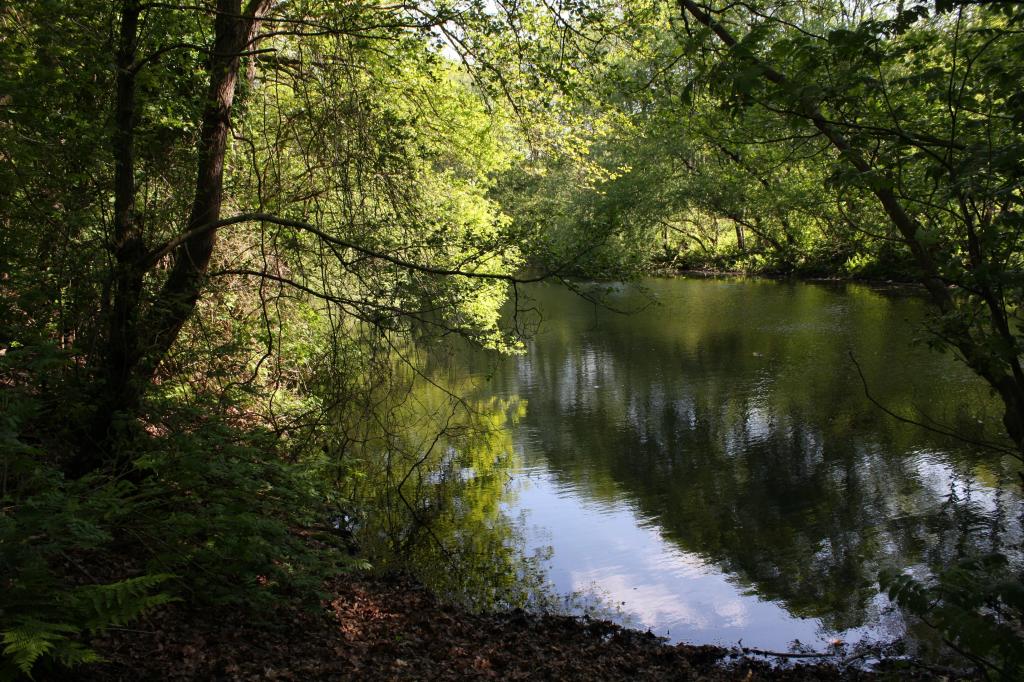Why living around nature could make you live longer
Published 8:30 am Wednesday, April 20, 2016

- (Stock photo/ Morguefile)
Living closer to nature is better for your health, new research suggests – and may even extend your life.
A study just published in the journal Environmental Health Perspectives found that people who live in “greener” areas, with more vegetation around, have a lower risk of mortality. The health benefits are likely thanks to factors such as improved mental health, social engagement and physical activity that come with living near green spaces.
The research relied on data from a vast long-term Harvard study funded by the National Institutes of Health called the Nurses’ Health Study, which has collected health information biennially on more than 100,000 female registered nurses in the U.S. since 1976. The new paper analyzed participant data from between 2000 and 2008, taking note of any deaths that occurred and their causes. At the same time, the researchers used satellite data to assess the amount of green vegetation surrounding each participant’s home during the study period.
The researchers found that people living in the greenest places – that is, people who had the most vegetation within 800 feet of their homes – had a 12 percent lower rate of mortality from any non-accidental cause than people living in the least green places. Specifically, they found that the relationship was strongest for deaths related to respiratory disease, cancer and kidney disease. These results were the same regardless of the participants’ income, weight or smoking status and also did not significantly change between urban and suburban locations.
In statistical analyses, though, the researchers found that participants’ mental health, social engagement, level of physical activity and exposure to air pollution likely explained how the green spaces were making a difference.
This is all in line with the ways previous research has suggested greenness can affect health. Places with more vegetation are generally thought to be less polluted, and the presence of vegetation, itself, can help keep air cleaner. And green spaces such as parks can help encourage people to get outside, exercise and engage with other people – all factors that can improve overall health. The effects on mental health may be somewhat less straightforward, but nonetheless important, as this study suggested.
“We were really surprised to find that the mental health pathway explained about 30 percent of the relationship between greenness and mortality,” said Peter James, the study’s lead author and a research associate at the Harvard T.H. Chan School of Public Health.
There are several theories about how nature affects mental health, said Howard Frumkin, dean of the school of public health at the University of Washington, who was not involved with the new study. One of them is known as the “biophilia” hypothesis, which was proposed by renowned biologist and naturalist E.O. Wilson. This theory embodies the idea “that we evolved as a species embedded in nature over most of our existence as a species, and something about that nature contact still resonates with us,” Frumkin said. “Something about contact with nature is soothing and restorative and thereby good for mental health.”
It may also be that the social engagement that green spaces encourage can improve people’s mindsets as well. “Social connectedness is a predictor of good mental health, which is in turn a predictor of good physical health,” Frumkin said.
Still, much remains uncertain about the exact mechanisms by which exposure to nature can improve health, Frumkin noted. And scientists are still trying to figure out what type of contact with nature works best.
“Is it a view out the window or do you need to get out and walk among the trees?” Frumkin said. “Does a bush do the trick or do you need a tree? Does it need to be in leaf during the summer, or does it work during the winter when it’s lost its leaves? There are lots of questions about the mechanisms and specifically about what form of nature contact offers benefit.”
James and his team hope to continue exploring the finer details in future research. They’re interested in looking more closely at some of the specific causes of mortality revealed in this study, especially cancer, in order to examine not just how greenness is connected to deaths but to the overall incidence of disease.
“We also do want to explore this with other cohorts,” James added. While he and his team controlled for demographic factors in this study, it’s still worth pointing out that most of the participants were white, and since they were all registered nurses, the socioeconomic range within the group was somewhat narrow.
James added that, while this study focused on greenness around the participants’ residences, it’s worth noting that most people spend a great deal of their time away from the home. So a good idea for future research would be to focus on a broader set of the spaces people interact with on a daily basis.
The challenge with all these ideas for future studies is that research on the health effects of greenness is difficult to get funded, Frumkin said, pointing out that even this study was “a piggyback onto an existing study that’s being funded for other reasons.” He feels that if more resources were afforded to the understanding of human interactions with nature, the health benefits could be immense.
“If we had a medication that did this – a medication that prolonged life, that addressed very different unconnected causes of disease, that did it at no cost and with no side effects – that would be the best medication of the decade,” Frumkin said. “But we don’t have a medication like that except for this ‘vitamin N’ – nature.”





